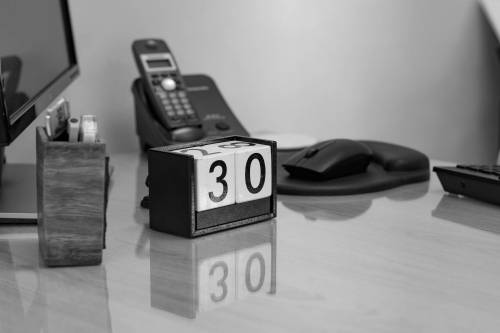

Not only can disruptive time technologies create new sectors and business models, but they also demolish old methods. Time management is vital in today’s world, not just for work but also for communication and collaboration. As the dust settles, one reality has emerged: “Power has migrated to virtual and remote.”
Companies must break down barriers, embrace remote working, and reinvent the workplace to manage time efficiently as they move through 2022. How organizations intend to invest in their workers will determine their readiness for the future workforce.
Worst case scenario:
As a high-achieving leader, you must first concentrate on your organization’s time management tactics. Your workers’ time management skills determine the success of your present and future initiatives. Tracking time helps firms identify and eliminate inefficiencies in various operations, from team collaboration to everyday operational duties. Time management offers a more customized, efficient, agile, and flexible workplace. Most businesses are aware of the workplace changes and swiftly respond to remain competitive.
Hybrid Schedule Planning
Your company may have people who can do more in less time. But are they distracted by low-value tasks and other disruptions? Also, working from home may easily confuse personal and business time. However, confusion causes stress and poor productivity.
Businesses must precisely measure employee time to enhance efficiency.
Particularly when implementing a mixed work environment fast. Employee time spent on activities and projects impacts an organization’s profitability, revenue, utilization, compliance, and more. According to the BLS, the typical employee spends about two hours every day on non-work pursuits.
In today’s competitive environment, you can’t afford to waste time. As companies shape their business models, knowledge workers who value every minute spent on productive activities rise. They need a contemporary instrument that can help them gain back time. Imagine how much money you could make if you spent this time on essential tasks. User-friendly and time-saving methods will boost employee satisfaction and work-life balance. With precise time management tactics for the company, you can achieve your goals faster.
Here are some time management tips for you and your team:
1. Time and Schedule Audits:
Non-work-related chores are a significant source of lost earnings. Of course, taking a vacation for personal or social reasons is acceptable, but it should not reduce employee productivity to the point where they cannot concentrate on their task. To improve employee productivity and speed up project delivery. In addition, leaders must analyze how people spend their time.
You may use this data to create a customized work schedule for your staff. Knowing where and how long to spend on a job can improve staff effectiveness. You may also re-plan and rearrange your workers’ schedules to line with the organization’s goals. Remember that proper scheduling is as vital as task monitoring. To do this, you may schedule learning sessions and define work priorities. Keeping track of upcoming tasks can help you distribute the workload and finish tasks on schedule.
You may build up a more disciplined layout to fulfill daily targets, and personnel won’t be overworked.
2. Pomodoro Technique:
Francesco Cirillo invented the Pomodoro Technique in the 1980s. To focus on his studies and finish his tasks, Cirillo committed to 10 minutes of serious study time, followed by a short break and restart.
He employed a tomato-shaped kitchen timer, coining the phrase Pomodoro method. This method encourages people to work with time rather than against it. For example, employees may work for 25 minutes, then take a 5-minute break. Pomodoro is these time breaks. Each Pomodoro symbolizes a task, and each break allows workers to refocus their minds and return to work. For example, after four Pomodoro, an employee may take a 15-20 minute rest.
The Pomodoro Technique helps one concentrate on one item at a time despite distractions. This method works well when an employee has a lot of work to do.
They can better manage their duties by taking a break.
3. Prioritize using ALPEN:
Your staff may also use the ALPEN approach. ALPEN helps your staff arrange their days. It makes it simpler for workers to plan their days and manage their time. The ALPEN technique seeks to increase employee performance while minimizing stress.
ALPEN stands for five methods
A – Activities – Make a to-do list.
L – Duration – Estimate the time required to accomplish each activity.
P – Planning for buffering – Set aside some time. Like 20% to fix problems and 20% to relax.
E – Setting priorities – Prioritize your tasks. e.g., delegate a task to a coworker.
N – Note-taking – Review accomplished activities.
Identify what went wrong to fix your time mistakes or shortages. Are you setting vague and unreasonable objectives without a deadline? Three points to consider. First, it hinders achievement. It also demotivates staff. Working under schedule constraints and providing a cushion can help encourage personnel. Third, your workers’ workload will be more organized and manageable if they first accomplish the highest priority tasks.
4. Give employees flexibility:
Multitasking reduces human performance by up to 40%, according to studies. Moreover, due to COVID-19, individuals juggle between home and office work. Multitasking makes it difficult to concentrate on one activity alone. This negatively impacts staff productivity and mental health. Therefore, giving your workers greater control over their own schedule is crucial. Every business owner knows this.
Flexibility in work hours is something that every employee wants. Suppose they can be flexible whether they work remotely or in a mixed environment. Then employees may effectively monitor their productivity and work appropriately.
The project, team, and organizational objectives may help workers prioritize their activities, envisage future work, and identify potential obstacles. As a result, your staff will feel more accountable, secure, and secure in their job and will be more efficient and productive.
5. Use a time management tool:
An AI-enabled time monitoring solution will change employee experience and efficiency.
Instead of manually inputting data, AI and ML can extract time data from users and systems, construct a timesheet, and limit employee interference to just a few clicks.
Many time management solutions are available
Managers may assign work to their teams based on their talents and availability using an AI-powered time management tool.
Firstly, this platform provides real-time information. Not only information on each employee. But each project, team, etc.
Secondly, it will provide work deadlines and anticipated completion dates. Most importantly, you and your management may prepare ahead to succeed with all of this information.
In conclusion, your business will want to choose a tool that delivers better visibility, precision, and control of your time. Tracking time is critical for productivity, and technology should be scalable and remove manual procedures, duplicate systems, and costly modifications.
Time, like money, is fleeting and finite.
Image Credit: Jéshoots; Pexels; Thank you!











Matt Rowe
Matt Rowe is a current Marketing Student at Brigham Young University. He has worked in Product Marketing, Field Marketing, Data Analytics, and Digital Marketing. Matt is fluent in Cambodian, and is interested in productivity and leadership.